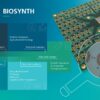
Perovskite-based tandem solar cells
Tandem solar cells based on perovskite hold the promise of more efficient utilization of sunlight compared to traditional silicon solar cells. The recent progress in the lab shows promising results, and now a team of researchers at Empa is working to scale up this technology for everyday use. Unlike silicon, which is used in most current solar cells and is reaching its efficiency limits, perovskite solar cells offer a promising alternative.
The efficiency of silicon solar cells is nearing its maximum limit, as only photons with a certain energy can be converted into electricity due to the material properties of silicon and its limited bandgap. However, perovskite solar cells offer the possibility to overcome this limitation by using two layers with different bandgaps and combining them into tandem solar cells. These can theoretically achieve an efficiency of up to 45 percent, compared to about 33 percent for conventional single-layer silicon cells.
The innovative potential of perovskite solar cells lies not only in their higher efficiency but also in their manufacturing. Projects like "SuPerTandem" are working on flexible, cost-effective, and scalable manufacturing processes. Compared to silicon solar cells, which require high-purity monocrystals, perovskite thin films can be printed, evaporated, or deposited from solutions, resulting in a lower carbon footprint.
The development of perovskite solar cells has the potential to reduce the overall costs of PV systems, as higher efficiency requires a smaller installation for the same electricity production. Additionally, these cells can be manufactured on lightweight, flexible films, expanding their potential applications, such as on car roofs or buildings with limited load-bearing capacity.
However, to unlock the full potential of perovskite solar cells, several challenges still need to be overcome. This includes scaling up the cells from prototypes to industrial sizes and protecting them from weathering. Researchers are actively working to overcome these hurdles in the next five to ten years, and there is already significant interest from the industry in this promising technology. Although research on perovskite solar cells is still relatively young, the progress indicates that they have the potential to shape the future of photovoltaics.
Find the original article here.
Document Details and Download
- building integrated photovoltaics
- Empa
- Manufacturing Processes
- perovskite solar cells
- Research Challenges
- Solar Cell Efficiency
- SuPerTandem






Perovskite-based tandem solar cells 0 reviews
Login to Write Your ReviewThere are no reviews yet.